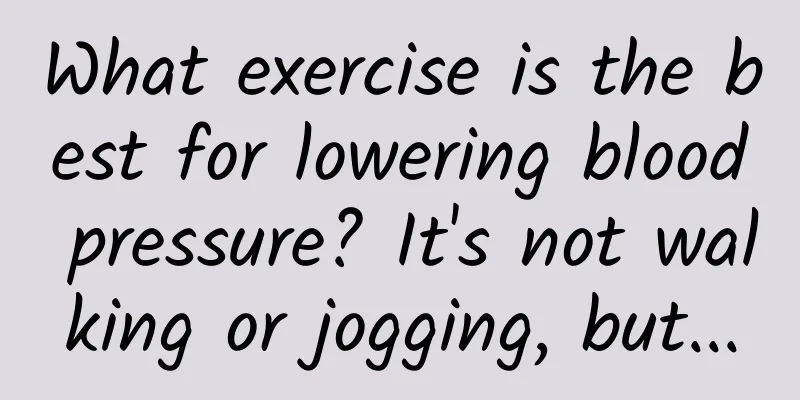Seven signs of abnormal gait

|
Generally speaking, there are three joints in the lower limbs, namely the hip joint, knee joint and ankle joint. The centers of these three joints should be in a straight line. Once there is a problem with these joints, the original gait will change. Some typical abnormal gaits are suggestive of certain specific diseases, and diagnosis can be made through inspection. Seven abnormal gaits to watch out for Intermittent claudication It means that after the patient starts to walk or walks for a while, he or she will experience unilateral or bilateral back pain, leg pain, numbness and weakness in the lower limbs, or even limping. After squatting or sitting down to rest for a while, the symptoms will quickly ease or disappear, and the patient can still continue to walk. However, after walking for a while, the above symptoms will reappear. Most people mistakenly believe that this symptom is a problem with the lower limbs or joints, but in fact, it is one of the main clinical manifestations of lumbar spinal stenosis. High-leg gait The affected leg is raised high, the foot is hanging down, and the patient limps with small steps, as if crossing a threshold. This is also called a straddling gait. This is mainly because the patient's calf extensor muscles are paralyzed, and the foot cannot be extended dorsiflexed and droops. In order to avoid the toes rubbing against the ground when walking, the patient consciously raises the leg. This gait is often seen in sciatic nerve, common peroneal nerve paralysis or trauma. Swinging gait When walking, the patient's trunk swings to the sides, raising the pelvis on the opposite side to drive the lower limbs to move forward. Therefore, every time a step is taken forward, the trunk swings to the opposite side, which looks like a duck walking, also known as duck walking. This gait is common in children with congenital bilateral dislocation of the hip joint, progressive muscular dystrophy, severe "O" bow legs, and damage to the superior gluteal nerve. Heel gait The heel lands on the ground when walking, and the gait is unstable, manifested by the body swaying slightly from side to side, the foot dorsiflexion, and the high arch of the foot. This gait can be seen in diseases such as tibial nerve palsy, Achilles tendon rupture, and hereditary ataxia. Circle gait When walking, the affected leg knee is stiff and rigid, the foot is slightly internally rotated and drooped, and the toes are hooked. When starting, turn to the healthy side first, raise the pelvis on the affected side to lift the affected limb, then use the affected hip joint as the axis, rub the ground with the straight leg and draw a semicircle to the outside and take a step forward. Because this gait is more common in people with spastic hemiplegia of the lower limbs, it is also called hemiplegic gait. Leg dragging claudication When walking, the healthy leg is in front, the affected leg is dragged behind, the front foot of the affected limb touches the ground, and the heel is lifted, which is manifested as dragging the leg and limping. This disease can be seen in children with acute hip sprain, early hip tuberculosis or hip periostitis. Protective lameness When walking, as soon as the affected foot touches the ground, the healthy foot starts to move forward quickly; the healthy foot touches the ground for a long time, while the affected foot touches the ground for a short time; the affected leg takes small steps, while the healthy leg takes large steps; the affected leg bears less weight, while the healthy leg bears more weight. This type of protective affected foot touch-ground limping is more common in people with lower limb injuries. In addition, common clinical symptoms include panic gait, which is often seen in cerebral arteriosclerosis, brain tumors, old head injuries, etc.; drunkard gait, which is mainly seen in cerebellar or vestibular diseases; ground-stepping gait, which is common in multiple neuritis and cervical spondylotic myelopathy; and crossed gait, which is often seen in patients with cerebral palsy, paraplegia, etc. Everyone walks differently because of subtle differences in muscle strength, tendon and bone length, bone density, visual acuity, coordination, and body weight, muscle or bone damage. Normal gait is accomplished through a series of movements of the pelvis, hips, knees, ankles and toes. Six methods of gait training Maintaining a correct walking posture is very important for improving joint function and delaying joint degeneration. In daily life, not everyone can have a healthy and elegant gait. Some people walk in small steps in high heels, some people walk with their shoulders swinging, and some people can hear his (her) footsteps from a long distance. From a professional point of view, walking in high heels makes the foot posture unnatural, and the body must consume more energy to maintain balance, so it is easy to get tired. If the shoes are too tight, the feet will feel pain with every step, which will also affect the correct gait. Therefore, you should wear fewer high heels and more mid-heeled or flat-heeled shoes, which are both labor-saving and flexible. To correct a bad gait, you should try to take less cars and walk every day. When walking, you need to keep your head up and your chest out, with your elbows slightly bent. 1. Walk on tiptoe with legs straight, hands on hips, arms back, chest and head up, for 10 minutes every day. 2. Walk slowly for 3 minutes, making sure your whole foot is on the ground and your knees are bent. 3. Walk steadily and briskly for two minutes. 4. Walk on tiptoes, shift your body weight from one foot to the other, and walk 50 steps with your knees bent. 5. Place your toes on the ground first, then move to the entire sole of the foot, quickly flexing and extending your knees and walking 30 to 60 steps. 6. Move forward and backward using waltz steps, rotate 360 degrees, and waltz in a large circle for 3 to 7 minutes. This method can achieve better results if you stick to it for half a year, and it also has a therapeutic effect on flat feet. |
<<: National Safe Medication Use Month | Two familiar brothers: aspirin and amoxicillin
>>: Exercise prescription for heart disease
Recommend
Where should the moxibustion part be used for uterine cold?
The disease of cold uterus does not only cause dy...
Why does leucorrhea during pregnancy look like snot?
During pregnancy, pregnant women have a physical ...
Slow growth and development, turned out to be a heart problem?
Author: Zhang Zhifang, deputy chief physician at ...
Can I eat sweet wine and eggs after a caesarean section?
I believe that giving birth to a healthy and smar...
How to drink Coke to make it taste better? Maybe you have been drinking Coke for so many years in vain
How to drink Coke best? Drink it iced, of course....
What is the reason for the coldness on both sides of the female waist?
Female friends often feel cold on both sides of t...
Endometrial thickness 4mm is normal
The uterus is a reproductive organ unique to wome...
Can I get pregnant if I go to the toilet after sex?
If you want to have a child, you need to know wha...
"Strength" is not in line with "heart" - heart failure
Heart failure, as the last battlefield of heart d...
What causes pain on the left side of the abdomen during pregnancy
Pain on the left side of the abdomen during pregn...
Why is my vagina itchy and swollen?
Itching symptoms often occur on human skin. The m...
How dangerous is the thinnest scar on the uterus?
The uterus is a female reproductive organ, where ...
Why do potatoes turn black after peeling? How can I store potatoes without them turning black after peeling?
Potatoes are a popular food. They are prepared in...
What is the cause of breath holding during pregnancy?
After pregnancy, you will experience some bad thi...
What are the blue veins on the breasts?
Blue veins on the breasts may be caused by mastit...









